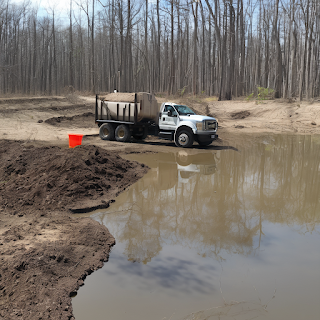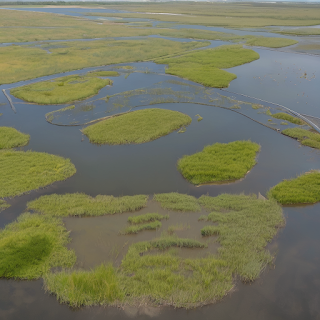Wetlands serve as vital ecosystems, providing flood protection, water filtration, wildlife habitat and more. However, human activities like agriculture and development have drastically reduced wetland areas over the past century. Restoration efforts aim to bring degraded wetlands back to health by reintroducing native vegetation adapted to their hydrologic conditions.
A key factor in restoration success is selecting the right planting media - the soil or substrate used to establish new plant roots. But with so many options available, how does one determine the ideal media for a given wetland site?
This article explores various planting media commonly used in wetland restoration, along with their pros, cons and best applications. Factors like hydrology, contaminant levels, cost and plant species requirements will be considered. The goal is to provide restoration practitioners a framework for media selection tailored to their site characteristics and project goals. With the right growing medium in place, newly established wetland plants can take hold and flourish, accelerating the recovery of important aquatic ecosystems.
So let's investigate some media options and how to choose between them.
Native Wetland Restoration Soils
For most restoration projects, reusing native wetland soils excavated on-site offers major advantages over imported materials. These historic soils have evolved over time to support the target plant community through natural wet/dry cycles. Their composition of clay, silt and organic matter creates ideal conditions for wetland plant rooting and nutrient/water exchange. Bacteria and mycorrhizal fungi indigenous to the area also aid plant establishment.
However, native soils may be contaminated from past land uses or contain invasive plant seeds/rhizomes. Testing is required to check for pollutants, nutrients and undesirable species. If heavily degraded, soils may need to be amended or a new medium selected. Another potential issue is loss of soil structure from stockpiling/transport that impairs drainage. With proper handling and screening, native soils can often form the best planting medium where available.
Best Planting Media for Wetland Soils
Imported Topsoils
When native soils are unsuitable, imported topsoils provide a cost-effective alternative planting medium. Topsoils contain organic matter and a diversity of microbes/fungi to support plant growth. They are readily available from suppliers as a consistent, uniform product. However, topsoils lack site-specific characteristics and may not drain or retain moisture like native soils over the long term.
Topsoils should be tested for contaminants, nutrients and compaction prior to use. Amendments may be needed to match wetland hydrology. There is also a risk of introducing invasive species, requiring quarantine of source material. While not ideal, topsoils can work as a temporary planting medium until wetland soils recover fully through natural processes.
Sand or Gravel Substrates
In cases of severe soil contamination or where excavation is impractical, a clean sand or gravel substrate may serve as the best planting medium option. These inorganic materials lack nutrients/microbes but provide structural support and drainage in saturated conditions. Perennial wetland plants suited to such conditions can thrive with supplemental fertilizer and mycorrhizal inoculation.
However, sand/gravel substrates are more expensive than soil options and lack the water-holding ability of organic matter. They may also drain too quickly for some wetland plant species. Proper grading and containment is needed to prevent substrate migration. Overall, sand/gravel works best for establishing emergent vegetation in permanently flooded settings like ponds or open water zones with moving water.
Compost Amendments
In situations where soils/substrates need organic matter enrichment, compost makes an excellent amendment to boost microbial activity, nutrient levels and water-holding capacity. Compost improves soil structure aggregation important for wetland hydrology and plant rooting. It also contains beneficial fungi and bacteria to aid plant establishment.
The right compost characteristics are important - it should be mature, stable and free of weed seeds, pathogens or heavy metals. Compost blended into native soils or topsoils typically comprises 10-30% of the total media volume. Too much risks nutrient leaching and anaerobic conditions harmful to plants. Proper curing and testing ensures compost amendments function safely and effectively in wetland settings over the long term.
Other Factors for Choosing Planting Media
Beyond the core planting media options above, some other factors merit consideration:
- Hydrology - Will the site be inundated or saturated? Media must drain/retain water appropriately.
- Contaminants - Test all materials for pollutants that could harm plants/wildlife upon exposure.
- Nutrients - Soil tests identify if amendments are needed to support target species.
- Invasives - Quarantining/testing sources prevents new weeds from establishment.
- Cost - More expensive options may be justified for difficult sites or sensitive species.
- Texture - Clay, silt or sand content influences aeration, drainage and water-holding.
With thorough evaluation of these restoration site characteristics and constraints, practitioners can identify the single best or combination of planting media to meet project goals. Proper installation then allows wetland vegetation to take root and flourish.
 |
| Restoring Wetland and Ex-Deforestation |
Conclusion
Selecting the ideal planting medium requires considering a wetland restoration site's unique conditions and challenges. While native wetland soils typically work best, other options from topsoils to sand/gravel may prove superior depending on the situation. A combination approach can also harness multiple media benefits. With testing, amendments and thoughtful installation, restoration practitioners can establish a foundation for resilient wetland plants to recover degraded aquatic ecosystems over the long term. As always, monitoring progress and making adjustments will help optimize outcomes at each unique restoration location.

Post a Comment